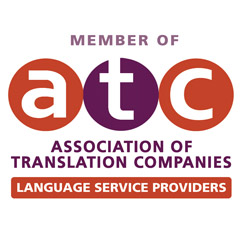Many people believe that translating a text is just switching words from one language to another. However, the reality is very different. In fact, the step-by-step process of a professional translation requires care, expertise, and organization. So, let’s explore each stage clearly.

Text reception and initial analysis
First, the agency receives the original document. At this stage, the project manager carefully analyzes the content. They assess the subject, the target audience, and the terminology. Because of this, this phase is key for planning the next steps.
Assignment to a specialized translator
Once the analysis is complete, the project is assigned to an expert translator. The selection depends on the field: legal, technical, medical, and so on. Moreover, the translator is always a native speaker of the target language.
Content translation
Next, the translator begins the work. They do not just change words. Rather, they interpret the message. During this phase, they keep the tone, style, and intent of the original. Furthermore, they use support tools like translation memories and glossaries.
Linguistic review
Once the translation is finished, another professional reviews the text. At this point, grammar, spelling, and style issues are corrected. In addition, the consistency of the entire document is verified. Therefore, this review is essential for delivering a high-quality result.
Technical editing and formatting
Then, the translated text is adapted to match the original format. In this phase, the final document is made to look like the source. Consequently, the file is ready to use or publish without further edits.
Final quality control
Before delivery, the project goes through a final check. The quality manager ensures that everything is correct. They carefully review terminology, tone, and structure.
Delivery to the client
It can be in the same format as the original or as requested. Besides that, some agencies offer post-delivery support. For example, they may make adjustments or answer questions if needed.
Why follow this process?
Clearly, this step-by-step process of a professional translation offers many benefits. To begin with, it ensures that each part of the text receives the attention it deserves.
Moreover, by dividing the work into clear stages, agencies can maintain better control. As a result, they deliver more accurate and consistent translations. In many cases, skipping one step can lead to costly mistakes.
Eventually, this could damage a company’s image or confuse the target audience.
Another advantage is that the client receives a polished, ready-to-use file. Instead of spending extra time on editing, they can focus on using the translated content. Therefore, the process saves time in the long run.
What’s more, this structured workflow allows translators and reviewers to collaborate efficiently. Through communication, they can clarify doubts, refine terminology, and improve overall quality.
Finally, following this professional process builds trust. Because of that, they are more likely to return for future projects.
All in all, this method is not only effective, but also necessary. By applying it, translation agencies guarantee results that meet both linguistic and professional standards.
Finally, if you need more information visit Professional Translation Services.



